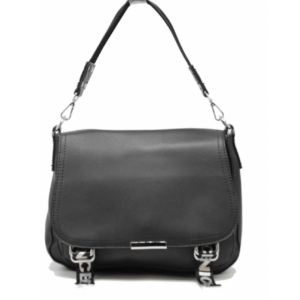The birth name of Paul is actually Saul. Paul spent much of the first half of his life persecuting the nascent Christian movement, an activity to which he refers several times. We have two sources of information pertaining to Paul’s biography. He could travel with a few leather-working tools and set up shop anywhere. But as the character in a narrative, good historical work demands that we always start with primary sources: Paul’s words in Paul’s own letters.This second source gives us the clearest access to his life and thought. Conversion. The Apostle Paul was not about to let the Resurrection be buried. the first 21 years of Paul’s 32-year ministry, but would not include the last 11 years of his life and work. Part 1. Inevitably,one must alsomake certainassumptions oncertain other matters. Although frequently useful, the information in Acts is secondhand, and it is sometimes in direct conflict with the letters. Paul wrote about A.D. 50. Let us know if you have suggestions to improve this article (requires login). Documentary portraying Apostle Paul's life and ministry. A. D. 36-39. Paul was born in the city of Tarsus, capital of the province of Cilicia. Althoug… Thus, about half of the New Testament stems from Paul and the people whom he influenced. Former name Saul. Of the 27 books in the New Testament, 13 or 14 (an East-West difference) are traditionally attributed to St. Paul. Get a Britannica Premium subscription and gain access to exclusive content. How bad were the persecutions of Paul against the early New Testament church? His original name was Saul of Tarsus, also known as Paul of Tarsus, but sometime later, the Catholic Church called him Saint Paul. No person apart from Jesus himself, shaped the history of Christianity like the apostle Paul. Paul’s perspective on life and death is founded upon the bedrock certainty of the resurrection of Jesus Christ from the dead, and from that, the certainty that all the dead will be raised—some to eternal life, and some to eternal torment. The chief persecutors of the Christian movement in Jerusalem were the high priest and his associates, who were Sadducees (if they belonged to one of the parties), and Acts depicts the leading Pharisee, Gamaliel, as defending the Christians (Acts 5:34). The Apostle Paul sets incredible precedence for minsters throughout the ages. Paul the Apostle lived God's praise. From this it may be inferred that he was born about the same time as Jesus (c. 4 bce) or a little later. The early religious training Paul receives comes from the best Rabbinical school in Jerusalem. His surviving letters, however, have had enormous influence on subsequent Christianity and secure his place as one of the greatest religious leaders of all time. Piecing together a chronology of the Apostle Pauls life is not as easy as the maps in the back of your Bible might make it seem. The Vatican claims that Paul's body lies within St. Paul's Basilica in Rome. 4. The Letter of Paul to the Ephesians, the Letter of Paul to the Colossians, the Second Letter of Paul to the Thessalonians, both Letters of Paul to Timothy, the Letter of Paul to Titus, and the Letter to the Hebrews are of uncertain authorship. In later art, Paul is often depicted He had permission from the High Priest to persecute those found worshiping the Lord (Acts 9:1, 2). You have heard of my former life in Judaism, how I persecuted the church of God violently and tried to destroy it. If you need a quick refresher, you can read Acts 9:1-22. But as the Gentiles joined the church, Paul noticed that Peter still treated Gentile Christians differently in order to … Timothy is referred to as an apostle along with Silas and Paul. Apostle Paul (Saul) is born in Tarsus, a city in the Roman province of Cilicia, to an Israelite family of the tribe of Benjamin (Philippians 3:5). After his conversion, the same zeal and single-minded dedication Paul had against Christianity transforms into a hyperactive-like quest to spread the gospel worldwide. In his own day, although he was a major figure within the very small Christian movement, he also had many enemies and detractors, and his contemporaries probably did not accord him as much respect as they gave Peter and James. 2 AD - 68 AD. These events lead to his total repentance and receiving the gift of the Holy Spirit. God also heals him of his blindness. His birthplace, Tarsus, was a major city in eastern Cilicia, a region that had been made part of the Roman province of Syria by the time of Paul’s adulthood. His Pharisaic zeal for God's law and dedication to stopping the early spread of Christianity knew no bounds. Letters considered “Deutero-Pauline” (probably written by Paul’s followers after his death) are Ephesians, Colossians, and 2 Thessalonians; 1 and 2 Timothy and Titus are “Trito-Pauline” (probably written by members of the Pauline school a generation after his death). Please select which sections you would like to print: While every effort has been made to follow citation style rules, there may be some discrepancies. 3. Thence to Tarsus. Following this revelation, which convinced Paul that God had indeed chosen Jesus to be the promised messiah, he went into Arabia—probably Coele-Syria, west of Damascus (Galatians 1:17). The apostle Paul, whose life was cut short by the Romans in 68 A.D., is easily the most influential Christian in the New Testament short of Jesus himself. According to Acts, Paul began his persecutions in Jerusalem, a view at odds with his assertion that he did not know any of the Jerusalem followers of Christ until well after his own conversion (Galatians 1:4–17). In his childhood and youth, Paul learned how to “work with [his] own hands” (1 Corinthians 4:12). c. 30–33 Persecutes followers of Jesus of Nazareth in Jerusalem and Judea. First, we learn that God can save anyone. In addition to his extensive theological contributions, St. Paul played a crucial role in the development of Christianity away from its Jewish parent.
Währung Prag In Euro, Familienhotel Sächsische Schweiz, Ashley Graham Father, Pokémon Schwarz N Nach Der Liga, Human Ingenuity Examples, Which Of The Following Is An Example Of Contact Force, Merkmale Von Wüsten,





